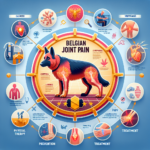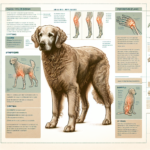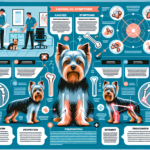Belgian Tervuren Joint Pain: Causes, Symptoms, Prevention, and Treatment

Introduction
The Belgian Tervuren, a member of the Belgian Shepherd family, is a highly intelligent and versatile breed known for its agility, loyalty, and striking appearance. Originating from Belgium, this breed was initially developed for herding and guarding livestock. Over time, the Belgian Tervuren has also excelled in various roles such as police work, search and rescue, and competitive obedience. Characterized by its elegant, long-haired coat and keen expression, the Belgian Tervuren is a favorite among dog enthusiasts for its combination of beauty and brains.
Like many breeds, the Belgian Tervuren is prone to certain health issues, with joint pain being a significant concern. Joint health is crucial for this breed due to its active lifestyle and working heritage. Ensuring the well-being of their joints can help maintain their quality of life and prolong their ability to perform various activities.
Breed-Specific Joint Pain Risks
Genetic Predisposition
The Belgian Tervuren, like many large and active breeds, is genetically predisposed to several joint-related issues. Hip dysplasia, a condition where the hip joint does not fit properly into the hip socket, is common in this breed. This can lead to arthritis and significant pain over time. Elbow dysplasia, another hereditary condition, affects the elbow joint and can cause lameness and discomfort. These genetic predispositions make it essential for breeders to screen for these conditions to reduce their incidence in future generations.
Age-Related Risks
As Belgian Tervurens age, the risk of developing joint pain increases. Arthritis, a degenerative joint disease, is particularly common in older dogs. This condition results from the gradual wear and tear of the joint cartilage, leading to inflammation, pain, and reduced mobility. Owners should be vigilant about their dog’s joint health as they approach middle age, typically around 6-8 years, and take proactive measures to manage and mitigate joint pain.
Activity Level and Joint Stress
The Belgian Tervuren is an active and energetic breed, often engaged in high-impact activities such as herding, agility, and obedience competitions. While regular exercise is essential for their physical and mental well-being, excessive or inappropriate exercise can place undue stress on their joints. Activities that involve jumping, sudden stops, and sharp turns can exacerbate joint issues, making it crucial for owners to balance exercise with joint health considerations.
Common Symptoms of Joint Pain in Belgian Tervuren
General Symptoms
Owners should be aware of several common symptoms of joint pain in Belgian Tervurens:
- Limping: A noticeable limp or favoring one leg over another can indicate joint pain.
- Stiffness: Difficulty in getting up or lying down, especially after rest, is a common sign.
- Reluctance to Move: A dog that is hesitant to climb stairs, jump, or engage in usual activities may be experiencing joint pain.
- Swelling: Visible swelling around the joints can be a sign of inflammation.
- Behavioral Changes: Increased irritability or withdrawal from social interactions can also indicate discomfort.
Breed-Specific Symptoms
In Belgian Tervurens, joint pain may manifest in specific ways due to their unique build and activity level. Owners might notice a decrease in their dog’s enthusiasm for activities they once enjoyed, such as herding or agility training. Additionally, the breed’s natural gait may become altered, with shorter strides or a more cautious movement pattern.
When to Consult a Vet
If any of the above symptoms are observed, it is crucial to consult a veterinarian promptly. Early intervention can prevent further deterioration and improve the dog’s quality of life. Regular veterinary check-ups are also essential for monitoring joint health and catching any issues early.
Preventive Measures for Joint Health
Exercise Recommendations
Maintaining an appropriate exercise regimen is vital for the Belgian Tervuren’s joint health. Low-impact activities such as swimming and controlled leash walks are excellent options. These exercises help build muscle strength without placing excessive stress on the joints. Avoiding high-impact activities, especially for young puppies whose joints are still developing, is crucial.
Dietary Suggestions
A balanced diet rich in essential nutrients can support joint health. Foods containing glucosamine and chondroitin can help maintain cartilage health. Omega-3 fatty acids, found in fish oil supplements, have anti-inflammatory properties that can alleviate joint pain. Consulting with a veterinarian for specific dietary recommendations tailored to the Belgian Tervuren’s needs is advisable.
Weight Management
Maintaining a healthy weight is critical for reducing joint stress. Excess weight can exacerbate joint pain and lead to further complications. Owners should monitor their dog’s weight and adjust their diet and exercise routine accordingly. Regular weigh-ins and body condition assessments can help ensure the dog remains at an optimal weight.
Early Screening and Monitoring
Early screening for joint issues can help catch problems before they become severe. Breeders should conduct genetic testing for hip and elbow dysplasia. Regular veterinary check-ups, including X-rays and physical examinations, can help monitor joint health and detect any early signs of arthritis or other joint conditions.
Treatment Options for Joint Pain
Non-Surgical Treatments
Several non-surgical treatment options can help manage joint pain in Belgian Tervurens:
- Medications: Non-steroidal anti-inflammatory drugs (NSAIDs) can reduce inflammation and alleviate pain. Always consult a veterinarian before administering any medication.
- Physical Therapy: Therapeutic exercises and techniques can improve joint mobility and strengthen supporting muscles.
- Lifestyle Adjustments: Modifying the dog’s activity level and providing a comfortable resting area can help manage pain.
Surgical Options
In severe cases, surgical intervention may be necessary. Common surgical options include:
- Hip Replacement: Replacing the damaged hip joint with an artificial one can significantly improve mobility and reduce pain.
- Arthroscopy: A minimally invasive procedure to clean out the joint and remove any debris causing pain.
- Osteotomy: Realigning the bones to reduce stress on the joint.
Surgical options should be discussed thoroughly with a veterinarian to determine the best course of action for the individual dog.
Alternative Therapies
Alternative therapies can complement traditional treatments and provide additional relief:
- Acupuncture: This ancient practice can help reduce pain and inflammation by stimulating specific points on the body.
- Hydrotherapy: Water-based exercises can improve joint mobility and muscle strength without placing stress on the joints.
- Massage: Regular massage can alleviate muscle tension and improve circulation, promoting joint health.
Lifestyle and Management Tips
Daily Care Routine
A consistent daily care routine can help manage joint pain in Belgian Tervurens:
- Morning: Gentle stretching exercises and a short walk to loosen stiff joints.
- Midday: A balanced meal with joint-supporting supplements.
- Afternoon: Low-impact playtime or a swim session.
- Evening: Another short walk and a gentle massage to relax muscles.
Modifying the Home Environment
Making the home environment more comfortable can significantly improve the quality of life for a dog with joint pain:
- Ramps: Install ramps to help the dog navigate stairs and get onto furniture without jumping.
- Orthopedic Beds: Provide a supportive bed to reduce pressure on the joints during rest.
- Non-Slip Flooring: Ensure floors are non-slip to prevent falls and further joint injury.
Long-Term Management
Long-term management strategies are essential for keeping the Belgian Tervuren active and happy despite joint pain:
- Regular Vet Visits: Schedule regular check-ups to monitor joint health and adjust treatment plans as needed.
- Consistent Exercise: Maintain a consistent, low-impact exercise routine to keep muscles strong and joints flexible.
- Ongoing Support: Continue providing joint-supporting supplements and a balanced diet.
FAQs About Belgian Tervuren and Joint Pain
What are the early signs of joint pain in Belgian Tervurens?
Early signs include limping, stiffness, reluctance to move, and behavioral changes such as irritability or withdrawal from social interactions.
Can joint pain in Belgian Tervurens be prevented?
While genetic predispositions cannot be entirely prevented, maintaining a healthy weight, providing appropriate exercise, and early screening can significantly reduce the risk and severity of joint pain.
Are there specific diets that can help with joint health?
Yes, diets rich in glucosamine, chondroitin, and omega-3 fatty acids can support joint health. Consult with a veterinarian for specific dietary recommendations.
When should I consider surgery for my dog’s joint pain?
Surgery should be considered when non-surgical treatments are no longer effective, and the dog’s quality of life is significantly impacted. Consult with a veterinarian to discuss the best options.
What alternative therapies are effective for joint pain in Belgian Tervurens?
Alternative therapies such as acupuncture, hydrotherapy, and massage can complement traditional treatments and provide additional relief from joint pain.
Conclusion
Joint pain is a significant concern for Belgian Tervurens, given their active lifestyle and genetic predispositions. By understanding the causes, symptoms, preventive measures, and treatment options, owners can take proactive steps to ensure their dog’s joint health. Regular veterinary check-ups, a balanced diet, appropriate exercise, and a supportive home environment are crucial for managing and alleviating joint pain. By taking these measures, owners can help their Belgian Tervuren lead a happy, active, and pain-free life.




